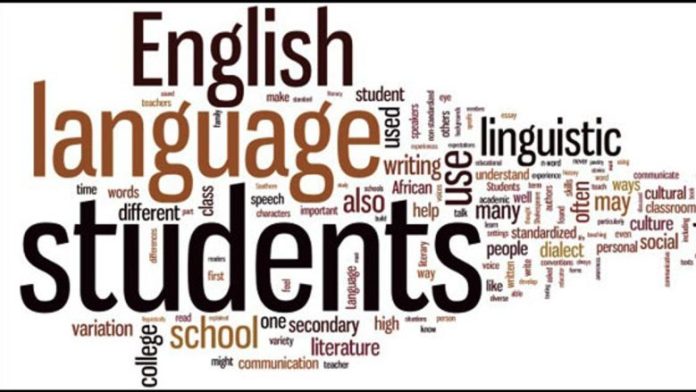English Learning Language
The landscape of modern education is irrevocably intertwined with the necessity of learning English as a Second Language (ESL) or English Language Learners (ELL) programs. If you want to work in the corporate sector, the first thing you’ll be asked is whether you know English or not. And if you don’t have knowledge of this language, you’ll not be eligible to work in this sector.
As the world becomes increasingly interconnected, English has emerged as the global lingua franca, rendering English proficiency a prerequisite for accessing a plethora of opportunities spanning education, employment, and social integration.
Despite the undeniable advantages of English language mastery, individuals hailing from diverse linguistic backgrounds encounter a myriad of challenges during their journey toward linguistic competence. In this comprehensive article, we shall delve deeply into the common obstacles faced by English Language Learners and explore a wide range of strategies designed to help them overcome these formidable hurdles.
For English Language Learners, language stands as the chief conduit of communication. Pronunciation, grammar, vocabulary, and the intricacies of idiomatic expressions loom as formidable obstacles, particularly for those whose native languages differ significantly from English. Furthermore, students from non-English-speaking backgrounds may grapple with understanding academic content delivered exclusively in English, amplifying their educational challenges.
To effectively dismantle these language barriers, educators must proactively adopt a multifaceted approach. First and foremost, fostering a classroom environment that exudes support and inclusivity, where students feel confident to express themselves, is paramount. Teachers should consistently implement language-rich activities that promote the cultivation of speaking, listening, reading, and writing skills.
Harnessing the power of technology, such as language learning apps and interactive software, can render language acquisition both engaging and accessible. Additionally, providing tailored support through English language development programs can play an instrumental role in bridging the chasm between language proficiency and academic excellence.
Journey
The journey of English Language Learners extends far beyond language acquisition alone. Cultural disparities constitute another layer of complex challenges, encompassing differing communication styles, social norms, and classroom expectations. These disparities can often result in cultural misunderstandings, leading to social isolation and an adverse impact on academic progression.
To address these multifaceted challenges, educators must undergo comprehensive cultural competency training aimed at gaining a deeper understanding of the diverse backgrounds that their students hail from. It is imperative to develop a culturally responsive curriculum that respects and integrates the unique experiences of ELL students.
Encouraging peer interaction and incorporating multicultural education into the curriculum can foster a genuine sense of belonging and mutual understanding among students from varied cultural backgrounds. Additionally, schools can proactively establish support networks, such as cultural clubs or mentorship programs, designed specifically to aid ELL students in their adaptation and thriving within their educational environments.
In essence, the challenges faced by English Language Learners extend far beyond linguistic barriers. They are a complex tapestry woven from language, culture, socioeconomic disparities, and emotional hurdles. It is only through the collective and dedicated efforts of educators, communities, and policymakers that these barriers can be dismantled, paving the way for a more inclusive and equitable educational system.
The success of ELL students is not only beneficial to them as individuals but also enriches the diversity and strength of our society as a whole. Through collective endeavor, we can empower English Language Learners to not only surmount these challenges but also to flourish and realize their full potential in education and beyond.

John D’Souza, Director of The English Advantage, sheds light on these challenges. He says that “ELLs grapple with limited vocabulary and language skills, hindering their academic participation. Proficiency struggles obstruct effective communication, affecting both classroom and everyday interactions. The burden intensifies in academic settings, where understanding complex content in an unfamiliar language becomes daunting. Rote learning in India’s education system exacerbates the problem, focusing more on knowledge than application.”
“Support for ELLs is scant, with subpar tutoring and untrained teachers compounding their difficulties. Social integration suffers due to low self-esteem, hindering relationships with fluent English speakers. However, solutions are within reach. Expert guidance is paramount, guiding ELLs toward qualified instructors and tailored resources. These instructors employ diverse methods, emphasizing vocabulary building, modified assignments, and interactive language use. Collaboration among ESL teachers and tailored content based on individual needs are vital.”
“The responsibility doesn’t solely rest on ELLs; educators, schools, families, and communities must unite. Acknowledging these challenges paves the way for a more inclusive learning environment, breaking down barriers and enabling ELLs to reach their full potential. The key lies in concerted efforts towards equity and inclusivity in education.”
Language Barriers
Language is the primary tool of communication, and for ELL students, mastering English presents its own set of challenges. Pronunciation, grammar, vocabulary, and idiomatic expressions can be daunting, especially for those whose native language is vastly different from English. Moreover, students from non-English-speaking backgrounds may struggle to comprehend academic content delivered in English.
To address these language barriers, educators must adopt a multi-pronged approach. First, creating a supportive and inclusive classroom environment where students feel comfortable expressing themselves is essential. Teachers should employ language-rich activities that promote speaking, listening, reading, and writing skills.
Additionally, using technology, such as language learning apps and interactive software, can make language acquisition more engaging and accessible. Moreover, providing additional support through English language development programs can help bridge the gap between language proficiency and academic success.
Cultural Differences
Beyond language, cultural differences can present significant challenges for ELL students. These differences encompass varying communication styles, social norms, and expectations in the classroom. Cultural misunderstandings can lead to social isolation and hinder academic progress.
To mitigate these challenges, educators must undergo cultural competency training to understand the diverse backgrounds of their students. It is crucial to create a culturally responsive curriculum that respects and incorporates the experiences of ELL students.
Encouraging peer interaction and multicultural education can foster a sense of belonging and understanding among students from different cultural backgrounds. Additionally, schools can establish support networks, such as cultural clubs or mentorship programs, to help ELL students adapt and thrive.
Socioeconomic Disparities
Socioeconomic disparities often intersect with language barriers, amplifying the challenges faced by ELL students. Many ELL students come from low-income families, which can result in limited access to educational resources, including books, technology, and tutoring. This economic disadvantage can impede their academic progress.
To address this issue, schools and communities can implement equity-focused initiatives. This may include providing free or affordable resources like textbooks, laptops, and internet access to ELL students. Schools can also offer after-school programs and tutoring services specifically designed for ELL students. Partnerships with local organizations and businesses can create scholarship opportunities and work-study programs for economically disadvantaged ELL students, helping them break free from the cycle of poverty.
Emotional and Psychological Challenges
The journey of English Language Learners is not just academic; it is also emotional and psychological. ELL students often experience stress, anxiety, and self-doubt as they navigate the challenges of learning a new language and adapting to a new culture. These emotional hurdles can affect their academic performance and overall well-being.
Educators and support staff must be attuned to the emotional needs of ELL students. Creating a safe and empathetic learning environment is paramount. School counselors and mental health professionals should be available to provide emotional support and guidance.
Additionally, peer mentorship programs can pair ELL students with peers who have successfully overcome similar challenges. Building a sense of resilience and self-confidence is as important as language proficiency in the journey of ELL students.
Basically, breaking down the barriers faced by English Language Learners is a collective responsibility of educators, communities, and policymakers. By addressing language barriers, cultural differences, socioeconomic disparities, and emotional challenges, we can create a more inclusive and equitable educational system.
The success of ELL students not only benefits them individually but also enriches the diversity and strength of our society as a whole. It is through our collective efforts that we can empower English Language Learners to overcome these challenges and reach their full potential in education and beyond.










